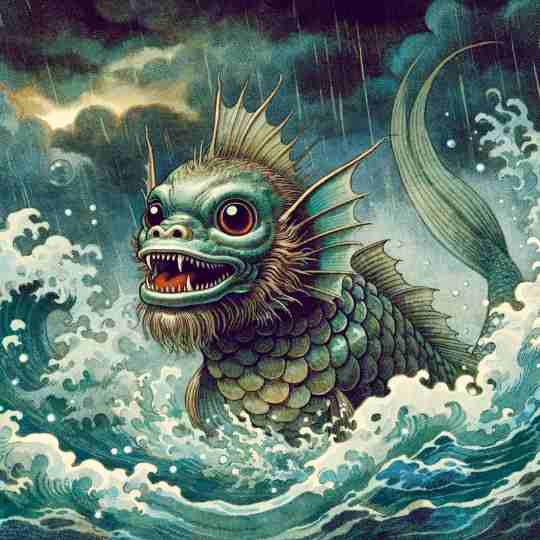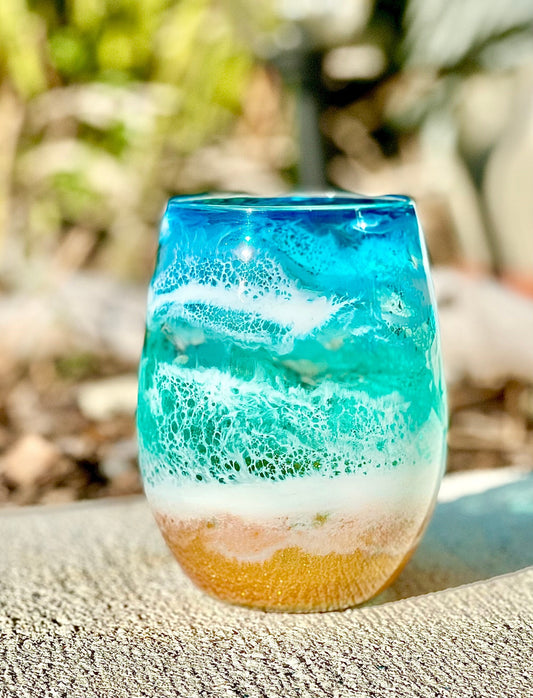In the tapestry of Japanese folklore, where myth intertwines with reality, the Ningyo occupies a place of reverence and mystery. Unlike their Western counterparts, these Japanese mermaids are not just enchanting figures of fantasy but carry profound cultural and spiritual significance. Our exploration begins at the very heart of this enigma, unveiling the layers of history, mythology, and the deep-seated beliefs that have shaped the legend of the Ningyo.
Tracing the Origins of Ningyo-Ancient Roots and Mythological Beginnings
The lore of the Ningyo stretches back to the earliest annals of Japanese literature, where these beings were first depicted not merely as mermaids but as complex symbols of the natural and supernatural world. Their stories, woven into the fabric of Japanese mythology, resonate with tales of other Asian mermaid myths, yet stand distinctly apart in their narrative depth and cultural impact.
The Enigmatic Appearance of Ningyo
Unlike the often-beautified depictions of mermaids in Western folklore, the appearance of Ningyo is far more complex and varied in Japanese tales. Traditionally, Ningyo are not merely human-fish hybrids but can possess a wide array of features, ranging from grotesque and eerie to bewitchingly beautiful. Some descriptions portray them with mouths like a monkey's, small fish-like teeth, golden scales, and even three eyes. Their voices are said to be as enchanting as their appearance, capable of captivating or even cursing those who hear them. This diversity in appearance underscores the Ningyo's multifaceted nature, embodying the mysterious and the unknown depths of the ocean and the human psyche.
Ningyo in Historical Context
Journeying through the annals of time, the Ningyo concept has evolved, reflecting the changing tides of Japanese society, beliefs, and artistic expression. These creatures have transcended the realm of mere folklore to become emblematic of various philosophical and ethical themes, such as the impermanence of beauty, the fleeting nature of life, and the profound connection between humanity and the natural world. In a similar vein, the mermaid myths of other cultures also hold deep historical and cultural significance. For those interested in exploring the rich tapestry of mermaid mythology beyond the shores of Japan, the story of Atargatis, the ancient mermaid goddess, offers a fascinating glimpse into how these ethereal beings have been revered and mythologized across different civilizations.
Ningyo in Japanese Folklore and Legends- Iconic Ningyo Tales
At the heart of Ningyo lore lie two iconic tales: The Tale of Urashima Taro and The Legend of Yao Bikuni. In the former, a fisherman is whisked away to an undersea palace, hinting at themes of time, loss, and longing. In the latter, a woman inadvertently consumes Ningyo flesh, granting her an unwanted eternity. These stories, rich in allegory, serve as a mirror reflecting the human condition and the eternal quest for meaning and connection.
Symbolism and Interpretation
In the rich tapestry of Japanese folklore, Ningyo emerge not merely as mythical beings but as harbingers of fate. Their appearances are laden with omens, foretelling both calamity and prosperity, embodying the duality of nature as both a giver and taker of life. This symbolism underscores the Ningyo's role as a bridge between the mundane and the mystical, offering insights into humanity's intrinsic fears and aspirations.
The Cultural Significance of Ningyo- Ningyo in Religious and Ceremonial Practices
Within the sacred rituals of Shinto and the profound teachings of Buddhism, Ningyo are revered as symbols of purification, renewal, and the cyclical nature of existence. They grace various ceremonies and narratives, their presence a testament to water's life-giving and purifying essence, reflecting a deep spiritual connection with the natural world.
Ningyo in the Arts
From the delicate strokes of Ukiyo-e paintings to the grandeur of Kabuki and Noh theater, Ningyo have been immortalized in countless forms of traditional Japanese art. These depictions are not mere artistic expressions but are imbued with layers of meaning, serving as a conduit between the earthly and the ethereal, the tangible and the transcendent.
Ningyo and the Connection to Nature- Ningyo as Protectors of the Sea
Beyond their mythical allure, Ningyo are often envisioned as guardians of the marine realm, embodying the ecological ethos that pervades Japanese culture. Their legends serve as poignant reminders of the fragile harmony between human civilization and the vast, untamed forces of nature.
Seasonal Festivals and Ningyo
In the rhythmic cycle of Japanese seasonal festivals, Ningyo are celebrated symbols of life's renewal and the interconnectivity of all beings. These festivals, steeped in tradition, underscore the enduring reverence for nature's rhythms and their profound influence on human life and spirituality.
Ningyo in Modern Japanese Culture- Ningyo in Contemporary Literature and Manga
As we navigate the currents of modernity, the ancient tales of Ningyo find new life in contemporary literature and manga. These modern renditions reframe age-old narratives within the context of present-day themes and challenges, showcasing the timeless appeal and adaptability of Ningyo folklore.
Revival and Reinvention
In the pulsating heart of modern festivals and pop culture, the Ningyo has experienced a renaissance, symbolizing a bridge to Japan's rich cultural heritage while embodying the dynamic, ever-evolving nature of folklore.
The enduring allure of the Ningyo in Japanese culture is a testament to the profound human desire to connect with the mystical, the unknown, and the transcendent. As we traverse the bridge from past to present, the Ningyo stands as a beacon of the enduring power of storytelling, its ability to convey timeless truths through the lens of the fantastical.
Related FAQs
How does the Ningyo differ from Western mermaid myths?
The Ningyo, with its rich tapestry of symbolism and deep cultural roots, diverges significantly from Western mermaid myths. While Western mermaids are often romanticized as beautiful, seductive creatures, Ningyo are depicted with a more complex and diverse range of attributes, often embodying both auspicious and ominous qualities.
What is the significance of the Ningyo in Japanese culture?
Ningyo hold a multifaceted significance in Japanese culture, symbolizing themes of longevity, mystery, and the interconnectedness of life. They are deeply woven into Japan's spiritual, artistic, and philosophical traditions, serving as a poignant reminder of the natural world's beauty and peril.
Are there any famous Ningyo artifacts or historical sightings?
Yes, there are several renowned Ningyo artifacts, including mummified remains and sculptures, which are often displayed in temples or museums. These artifacts, steeped in legend and lore, continue to intrigue and captivate those interested in the mystical aspects of Japanese heritage.
How have Ningyo tales evolved in modern Japanese media?
In modern Japanese media, Ningyo tales have evolved to reflect contemporary themes and societal issues, while retaining their core mythological essence. This evolution is evident in the diverse range of Ningyo portrayals, from manga and anime to cinema, where they continue to captivate imaginations with their timeless allure and adaptability.





